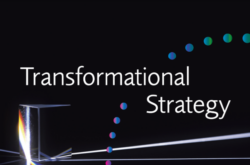How is the Consensus Workshop Method Unique?
It’s easy to confuse the Consensus Workshop Method with other design patterns. Its unique qualities make its effectiveness greater than many other tools.
Excerpted from Getting to the Bottom of ToP, by Wayne and Jo Nelson.
Comparison of the Consensus Workshop Method with the design patterns of other methods
Many workshop-type approaches start with brainstorming. The important thing is what happens to the brainstormed items. The consensus workshop method treats brainstorming in a unique way.
Brainstorming
The consensus workshop method addresses “groupthink”, which is often cited as a drawback of group brainstorming and ideation, by providing individual time to think and prioritize one’s own ideas silently before discussing them. By not stopping with the at the brainstorming level, the consensus workshop method uses the initial thoughts of individuals as building blocks to build larger meaning.
Categorizing and sorting
Western thought emphasizes and teaches analysis, sorting and categorizing from an early age. On Sesame Street they ask, “Which of these is not like the others?” It is easy to create categories and sort ideas into them, but no new knowledge or understanding is created, and “miscellaneous” categories are created, effectively marginalizing ideas that are different or outliers. In contrast, the consensus workshop method is best used to synthesize new ideas from a diversity of individual ideas. This approach completely sidesteps the question of agreeing or disagreeing with someone else’s idea; it asks how each unique idea can contribute to something the group has not seen before.
Brainstorming and prioritizing
Prioritizing is often done with dots. This process rates some people’s ideas over others’ ideas and discards any that don’t get enough votes. The results stay at the superficial level, never allowing a conversation about how each individual idea enriches a larger picture or deeper meaning. Ranking at this point in the process rewards familiar ideas and often rejects odd but innovative ideas that might usefully add new wisdom. Many people end up feeling that their ideas are rejected or not really heard.
Remote workshops
Although any of these classic ways of conducting a workshop can be used in face-to-face situations, some workshops need to include people in many locations simultaneously, and it’s worth experimenting with software to help. The biggest challenges are finding a platform that allows for clustering individuals’ ideas without first assigning categories to put them in, and allowing discussion while clustering. Electronic applications for using the method online include Spilter and Stormboard, which mimic sticky notes on a wall; Blackboard Collaborate, which has a whiteboard and moveable text boxes, and Adobe Connect, which uses interactive pods. One colleague uses a desktop-sharing application in conjunction with MindJet, a mindmapping application, to cluster ideas. The mindmapping application can also be projected from a computer onto a screen in a face-to-face meeting. Software can also be useful in recording or reporting on a workshop. The possibilities will continue to evolve.





